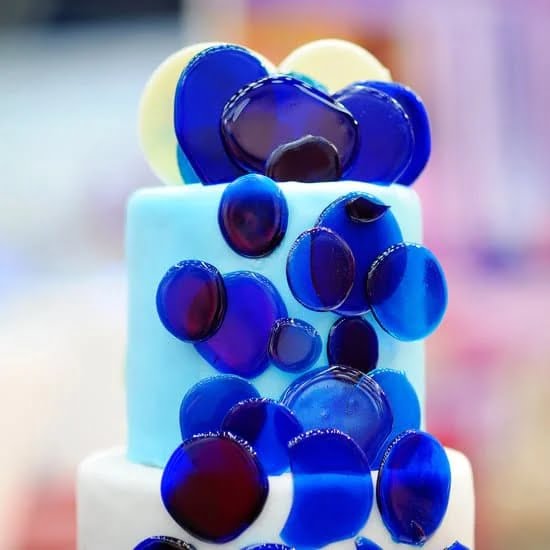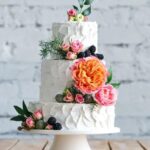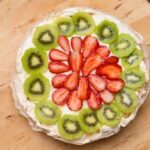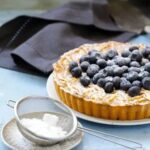Edible Daffodil Cake Decorations have become a popular trend in the world of cake decorating, adding a touch of stunning and unique beauty to any confection. The delicate and vibrant daffodils not only enhance the visual appeal of cakes but also offer an edible element that adds excitement to every bite. In this article, we will dive into the artistry behind creating these magical edible decorations and explore different techniques, materials, and tools needed for the process.
It’s no surprise that using edible flowers as cake embellishments has been gaining popularity in recent years. Flowers bring a natural beauty to any occasion, and daffodils in particular have captivated cake decorators with their vibrant yellow petals and breath-taking shapes. Edible Daffodil Cake Decorations provide an exquisite way to infuse nature’s elegance into your desserts, making them stand out from the crowd.
Whether you’re a professional baker or simply love experimenting with cake decorating as a hobby, this article will guide you through the step-by-step process of creating realistic edible daffodils. From choosing safe and pesticide-free daffodils to showcasing your creations on different cake bases, we will cover everything you need to know to elevate your baking skills and create awe-inspiring cakes adorned with these enchanting floral treats.
So let’s embark on this journey together and uncover the magic of edible daffodil cake decorations.
The Art of Creating Edible Daffodil Cake Decorations
Creating beautiful and realistic edible daffodil cake decorations is an art that requires attention to detail and a few specific techniques. This section will provide step-by-step instructions on how to make these stunning floral embellishments, as well as discuss the various materials and tools needed for the process.
Step-by-Step Instructions
To create lifelike edible daffodils, start by gathering the necessary materials. You will need gum paste or flower paste, yellow and orange food coloring, edible glue or royal icing, a daffodil flower cutter set, a foam pad, and a ball tool.
Begin by coloring a small amount of gum paste or flower paste with yellow food coloring to achieve the desired shade for the petals. Roll out the colored paste thinly on a non-stick surface or cornstarch-dusted board. Use the daffodil flower cutter set to cut out petal shapes.
Next, place each petal on a foam pad and use a ball tool to thin out and shape the edges. Gently roll up one edge of each petal inward to create a trumpet-like shape. Repeat this process for all the petals.
For the center of the daffodil, color another small amount of paste with orange food coloring. Roll it into a small ball and flatten it slightly. Attach this center piece inside the trumpet-shaped petals using edible glue or royal icing.
Lastly, leave your edible daffodil creations to dry overnight. Once they are completely dry, you can carefully attach them to your cake using more edible glue or royal icing.
Techniques, Materials, and Tools
There are various techniques that can be used when creating edible daffodil cake decorations depending on personal preference and desired effect. Some decorators may choose to hand-paint additional details onto their petals using food safe brushes and gel colors for added realism. Others may prefer to dust the petals with edible dusting powders to give them a more vibrant and textured appearance.
In terms of materials, gum paste or flower paste is the preferred medium for creating intricate and delicate sugar flowers like daffodils. These pastes have a finer consistency than regular fondant, allowing for greater flexibility and easier shaping. They are also more firm when dried, which helps maintain the shape of the daffodil petals.
To achieve the best results, having the right tools is essential. Along with the daffodil flower cutter set mentioned earlier, other useful tools include veining mats or silicone molds for adding realistic texture to petals and leaves, as well as non-stick rolling pins and grooved boards for rolling out gum paste evenly.
By following these step-by-step instructions and utilizing the appropriate techniques, materials, and tools discussed above, you can create stunning and realistic edible daffodil cake decorations that will add a touch of beauty to any cake.
The Perfect Cake Base for Edible Daffodil Decorations
Introduction:
When it comes to creating stunning and unique cake decorations, edible daffodils are a truly magical choice. The vibrant colors and delicate petals of daffodils add an exquisite touch to any cake, making it a true work of art. In recent years, there has been a growing trend in using edible flowers as cake embellishments, and daffodils have quickly become a favorite among both professional bakers and home cooks.
Creating Realistic Edible Daffodils:
Making realistic edible daffodil decorations may seem like a daunting task, but with the right techniques, materials, and tools, anyone can master this art. To start, you will need gum paste or fondant in various colors to create the different parts of the flower. You will also require wire or floral tape for the stems and some petal dust for adding depth and shading to your daffodils.
Step-by-step Instructions:
- Begin by shaping the center trumpet of the daffodil using yellow gum paste or fondant.
- Create the outer petals by rolling out white gum paste or fondant and cutting out petal shapes.
- Attach the trumpet to the petals using edible glue or water.
- Use petal dust in shades of orange and yellow to add depth to both the trumpet and petals.
- Allow your daffodil decorations to dry completely before attaching them to your cake.
The Ideal Cake Base:
To complement your edible daffodil decorations, it’s important to choose the right cake flavor and type that will enhance their beauty on your cake. Lighter flavors such as vanilla or lemon cakes are popular choices as they don’t overpower the delicate floral notes of the daffodils. However, chocolate cakes can also be paired with daffodil decorations for a rich and elegant contrast.
Achieving an ideal texture is also crucial when pairing cakes with edible daffodil decorations. Moist and fluffy cakes are perfect for showcasing the intricate details of the flowers. To achieve this, ensure that your cake is properly leveled and trimmed before applying any frosting or fondant. Additionally, consider using fillings that complement the flavor profile of your daffodils, such as lemon curd or vanilla buttercream.
Experimenting with different cake flavors and textures will allow you to find the perfect base for your edible daffodil decorations and create a truly delightful culinary experience for your guests.
| Cake Flavor | Complementary Fillings | Texture |
|---|---|---|
| Vanilla | Lemon Curd | Moist and Fluffy |
| Lemon | Vanilla Buttercream | Light and Refreshing |
| Chocolate | Raspberry Filling | Rich and Decadent |
Showcasing Edible Daffodil Cake Decoration Designs
One of the most exciting aspects of using edible daffodils as cake decorations is the endless possibilities for creating stunning and unique designs. From cascading flowers to clustered arrangements, edible daffodils can add a touch of elegance and beauty to any cake. In this section, we will showcase some inspiring cake designs that utilize edible daffodil decorations.
- Cascades of Edible Daffodils: One of the most striking ways to incorporate edible daffodils into cake designs is by creating cascades. These cascading flower arrangements can be made by attaching individual daffodils or small clusters of flowers to fondant ribbons or wire stems that gracefully spill down the sides of the cake. This design adds a sense of movement and flow, giving the cake an enchanting and whimsical appearance.
- Clusters of Edible Daffodils: Another popular approach to showcasing edible daffodil decorations is by creating clusters or bunches of flowers on top of the cake. These clusters can be arranged in various shapes and sizes, such as circular arrangements or scattered groupings across the surface of the cake. By clustering multiple daffodils together, you can create a focal point that draws attention and adds visual interest to the overall design.
- Bouquets with Edible Daffodils: For those looking for a more sophisticated and elegant look, incorporating bouquets of edible daffodils into cake designs is a fantastic option. These bouquets can be created by arranging different sizes and varieties of daffodils together in a cohesive arrangement on top of the cake. This design creates a beautiful centerpiece-like effect that elevates the overall aesthetic appeal of the cake.
To truly bring these ideas to life, it is important to select high-quality and realistic-looking edible daffodil decorations. Choose colors that complement your overall theme and ensure that each flower looks fresh and vibrant. By carefully selecting and arranging edible daffodils, you can transform any cake into a work of art.
| Design | Description |
|---|---|
| Cascades of Edible Daffodils | Create cascading flower arrangements by attaching daffodils to fondant ribbons or wire stems that gracefully spill down the sides of the cake. |
| Clusters of Edible Daffodils | Create focal points and visual interest by arranging clusters or bunches of daffodils in various shapes and sizes on top of the cake. |
| Bouquets with Edible Daffodils | Elevate the overall aesthetic appeal of the cake by arranging different sizes and varieties of daffodils together in a cohesive bouquet-like arrangement on top of the cake. |
Edible Daffodils
Daffodils are not only beautiful, but they can also be a delightful addition to your cake decorations. However, it is important to ensure that the daffodils you use are safe for consumption and free from harmful pesticides. In this section, we will provide readers with essential safety and selection tips when using edible daffodils for cake decorations.
When selecting daffodils for consumption, it is crucial to choose varieties that are specifically labeled as “edible.” Not all daffodil varieties are safe to eat, as some contain toxic compounds that can cause discomfort or illness if ingested. Look for trusted sources such as specialty grocers or farmers markets that sell edible flowers. Alternatively, consider growing your own organic daffodils so you have complete control over their cultivation.
Before using the daffodils in your cake decorations, make sure to properly prepare them. Start by gently removing any dirt or debris from the petals by lightly rinsing them under cold water. Next, carefully remove the trumpet (or center) of the flower as well as any tiny parts inside the petals, as these parts tend to be bitter and unpleasant to eat.
Presentation is key when it comes to edible daffodils on cakes. To showcase their beauty while ensuring safety, avoid inserting the entire stem of the flower into the cake. Instead, trim the stem so that only a small portion remains before placing them on your cake. This way, guests will easily identify them as edible decorations rather than mistaking them for inedible floral arrangements.
By following these safety and selection tips, you can confidently incorporate edible daffodil decorations into your cakes without compromising on taste or health hazards. Selecting safe and pesticide-free daffodils and preparing them appropriately will not only enhance the aesthetics of your cake but also provide an enjoyable culinary experience for all who indulge in its beauty and deliciousness.
Enhancing Flavors with Edible Daffodil Cake Decorations
Edible Daffodil Cake Decorations not only add visual appeal to cakes, but they can also enhance the flavor profile of the dessert. By infusing subtle floral notes into cake flavors, daffodils create a unique and delightful taste experience that complements the overall design. In this section, we will explore how daffodils can be used to elevate the flavors of cakes and provide innovative recipes for incorporating these edible flowers into fillings, glazes, and syrups.
When using daffodils to enhance flavors, it is important to select fresh and fragrant flowers that are safe for consumption. Choose organic daffodils that have not been treated with pesticides or other chemicals. Rinse the flowers thoroughly under water to remove any dirt or debris before using them in your recipes. It is essential to remember that only certain parts of the daffodil are edible – the petals and trumpets. The bulb and stem contain toxic compounds and should be avoided.
One way to incorporate daffodils into cake fillings is by infusing their floral essence into cream-based mixtures. Begin by gently simmering some milk or heavy cream with a handful of daffodil petals over low heat. Allow the mixture to cool, then strain out the petals. Use this infused milk or cream as a base for your cake filling recipe, such as a custard or buttercream filling.
In addition to fillings, you can incorporate daffodils into glazes and syrups for added flavor dimensions. Make a simple syrup by combining equal parts sugar and water in a saucepan with daffodil petals. Bring it to a boil until the sugar has dissolved completely, then allow it to cool before straining out the petals. This floral-infused syrup can be brushed onto cakes while still warm for added moisture and flavor.
By experimenting with various recipes and techniques, you can discover delightful ways to enhance the flavors of your cakes with edible daffodil decorations. Don’t be afraid to get creative and explore different flavor combinations that complement the natural sweetness of these beautiful flowers. With each bite, your guests will experience the magic of daffodils in both visual and culinary form.
Edible Daffodil Decorations for Special Occasions
Incorporating Daffodils into Weddings
Daffodil decorations can add a touch of elegance and whimsy to weddings. Their vibrant yellow color symbolizes joy and new beginnings, making them a perfect choice for this special occasion. One stunning way to incorporate edible daffodils into a wedding cake is by creating a cascading effect.
Begin by placing a cluster of daffodil decorations at the top tier and have them gradually spill down the sides of the cake. This creates a visually striking centerpiece that will surely impress guests.
Another creative idea for weddings is to use daffodils to create edible flower bouquets. Gather several daffodil decorations together using floral wire and tape, making sure they are securely attached. These beautiful bouquets can be placed on top of the wedding cake or used as standalone table centerpieces. Not only do they lend a charming and romantic touch to the overall aesthetic, but they also offer guests an opportunity to enjoy an edible treat along with their slice of cake.
Daffodils for Birthday Celebrations
Birthdays are all about celebrating life, and what better way to do so than with the bright and cheerful presence of daffodils? When it comes to birthday cakes decorated with edible daffodils, there are numerous design options available.
For example, clusters of daffodil decorations arranged around the base of a multi-tiered cake can create an eye-catching border that embodies joy and happiness. Complementing these arrangements with additional spring-themed elements such as butterflies or ladybugs adds even more charm to the birthday celebration.
For those looking for a more minimalist approach, incorporating a single edible daffodil as the focal point is an excellent choice. Placing one large daffodil decoration in the center or at the top of a cake instantly becomes an attention-grabbing feature. This design is perfect for those who appreciate simplicity, yet still want to make a statement with their cake decorations.
An Edible Daffodil Touch for Anniversaries
When it comes to anniversaries, daffodil decorations can evoke feelings of nostalgia and romance. Intertwining edible daffodils with other floral decorations creates a visually stunning representation of the enduring beauty of love. One popular technique is to create clusters of daffodil decorations intertwined with delicate vines made from icing or fondant. These vine-like arrangements can be placed along the sides of a tiered cake or draped across the top, adding an elegant touch to the anniversary celebration.
For a more modern approach, consider using edible daffodils to create abstract patterns on the cake’s surface. This technique involves placing individual daffodil decorations strategically across the cake in a seemingly random pattern. The result is a whimsical and contemporary look that perfectly captures the uniqueness and longevity of the couple’s love.
By incorporating edible daffodil decorations into special occasions such as weddings, birthdays, and anniversaries, individuals can add a touch of charm and sophistication to their celebrations. These versatile flowers offer endless possibilities for creative expression, allowing individuals to showcase their unique style and creativity through cake decoration choices. Whether it’s cascades, clusters, or bouquets, using edible daffodils will undoubtedly elevate any special occasion cake into an edible work of art.
Tips for Using Edible Daffodil Cake Decorations
Using edible daffodil cake decorations can elevate any cake from ordinary to extraordinary. These delicate and beautiful flowers not only add a touch of elegance, but they are also completely safe to eat. However, handling and storing the daffodil decorations properly is essential to ensure their longevity and freshness. Here are some helpful tips for using edible daffodil cake decorations:
- Handle with care: When working with edible daffodils, it’s important to handle them gently to avoid damaging the petals or stems. Use clean hands or food-safe gloves when touching the flowers to prevent any contamination.
- Store in a cool place: To maintain the freshness of your edible daffodils, store them in a cool area away from direct sunlight and heat sources. Avoid putting them in the refrigerator as this may cause condensation, which can harm the delicate petals.
- Time it right: While fresh edible daffodils can last for several days when stored correctly, it’s best to apply them to your cake as close to serving time as possible. The longer they sit on the cake, the more likely they are to wilt or lose their vibrant colors.
- Adhere with caution: There are various ways to attach edible daffodil decorations to your cake, such as using frosting or edible adhesive glue. Regardless of the method you choose, make sure it is food-safe and suitable for use with delicate flowers.
- Consider placement carefully: When placing your edible daffodil decorations on the cake, think about both aesthetics and structural stability. Avoid placing heavy flowers near unsupported areas that could cause the decorations to slump or fall off.
By following these tips, you can ensure that your edible daffodil cake decorations remain fresh, visually stunning, and safe for consumption throughout your event. Remember that each flower is unique and should be treated with care so that its beauty can be fully showcased on your cake.
Daffodils Beyond Cakes
Daffodils are not limited to being used solely as cake decorations. Their stunning beauty and unique flavor can be incorporated into a variety of culinary creations, ranging from desserts to cocktails and even savory dishes. In this section, we will explore some alternative uses for daffodils, encouraging readers to think outside the box and experiment with these delightful flowers in their own kitchen.
One creative way to incorporate daffodils into desserts is by using them in puddings or custards. Adding finely chopped daffodil petals can infuse a subtle floral aroma and delicate taste into creamy desserts like rice pudding or panna cotta. To ensure maximum flavor extraction, the petals can be steeped in warm milk or cream before being incorporated into the recipe.
Daffodils can also add a touch of sophistication to cocktails. The trumpet-shaped flowers can be used as a garnish, adding visual appeal and a hint of floral essence to drinks like champagne cocktails or gin fizzes. Alternatively, daffodil petals can be infused into simple syrups or liqueurs, creating unique flavors that can elevate any cocktail creation.
If you’re feeling adventurous, daffodils can even be used in savory dishes. The subtle onion-like taste of daffodil bulbs makes them an interesting addition to salads, stir-fries, or soups. Just make sure to use them sparingly as they have a strong flavor that could overpower other ingredients.
By exploring alternative uses for daffodils beyond cakes, you can unlock their full potential in the culinary world. Whether you choose to experiment with desserts, cocktails, or savory dishes, these versatile flowers are sure to surprise and delight your taste buds with their unique flavors and scents. So next time you see a patch of bright yellow daffodils blooming in your garden, consider harnessing their beauty and essence in your next culinary creation.
Conclusion
In conclusion, edible daffodil cake decorations offer a stunning and unique way to elevate any cake into a work of art. The growing trend of using edible flowers in cake embellishments has opened up a whole new world of creativity for bakers and decorators. With the step-by-step instructions provided, anyone can learn the art of creating realistic edible daffodils.
The perfect cake base is important when it comes to showcasing edible daffodil decorations. The article explores different flavors and types of cakes that complement the beauty of these flowers. Tips on achieving the ideal texture and taste are also shared to ensure that the cake and flowers work harmoniously together.
Furthermore, this article showcases various designs that utilize edible daffodil decorations, from cascades to clusters and even bouquets. These designs highlight the versatility of daffodils as cake embellishments and inspire readers to experiment with different arrangements.
It is important to note that safety should always be a priority when selecting and preparing edible daffodils. Choosing safe and pesticide-free flowers is crucial to ensure the well-being of consumers. The article provides detailed instructions on how to properly prepare and present the flowers.
Daffodil decorations are not limited to just cakes; they can be used in other culinary creations as well. By infusing subtle floral notes into fillings, glazes, or syrups, daffodils can enhance the overall flavor profile of desserts or even savory dishes. Readers are encouraged to think outside the box and explore alternative uses for these beautiful edible flowers.
Frequently Asked Questions
How to make a daffodil cake decoration?
To make a daffodil cake decoration, start by preparing the necessary ingredients and tools. You will need yellow and white fondant, green gum paste, a rolling pin, flower-shaped cutters, gel food coloring in yellow and orange shades, a paintbrush, edible glue or water, and a foam pad. Begin by tinting some of the fondant yellow using the gel food coloring. Roll out the yellow fondant on the foam pad and use flower-shaped cutters to create petal shapes. Then shape the petals to resemble daffodil petals by gently thinning the edges with your fingers.
Roll small balls of white fondant for the centers of the flowers and attach them to each petal using edible glue or water. Cut out green gum paste shapes for leaves and attach them beneath the flower petals. Lastly, use orange gel food coloring diluted with a small amount of water to paint touches of color onto each petal for added realism. Allow the decorations to dry before adding them as accents to your cake.
What flowers not to put on cakes?
When it comes to choosing flowers for cake decorations, it is important to know which ones are safe for consumption and which ones should be avoided at all costs. Never put flowers on cakes that have been treated with pesticides or other chemicals not intended for food contact. Additionally, avoid using highly toxic flowers such as lilies of the valley, foxglove, oleander, or any other plants that can cause harm if ingested.
Some flowers may also contain pollen that can stain or affect sensitive individuals negatively with allergies or sensitivities. Always stick to edible flowers designated specifically for culinary use when adorning your cakes.
How do you stick edible flowers to a cake?
There are different methods you can use to stick edible flowers onto a cake depending on personal preference or what works best with your chosen decoration style. One common method is using edible glue made from a mix of tylose powder or CMC (carboxymethyl cellulose) and water. This glue can be brushed onto the back of each flower before attaching it to the cake.
Alternatively, you can use a small brush to lightly moisten the cake’s surface with a bit of water or even clear piping gel and press the flowers gently onto it. If you are using fresh flowers, avoid direct contact between them and the cake by placing a barrier such as wax paper or plastic wrap underneath. Remember to always wash edible flowers thoroughly before using them on cakes and choose ones that are in peak condition for both flavor and appearance.

Welcome to our cake decorating blog! My name is Destiny Flores, and I am the proud owner of a cake decorating business named Cake Karma. Our mission is to provide delicious, beautiful cakes for all occasions. We specialize in creating custom cakes that are tailored specifically to each customer’s individual needs and tastes.





